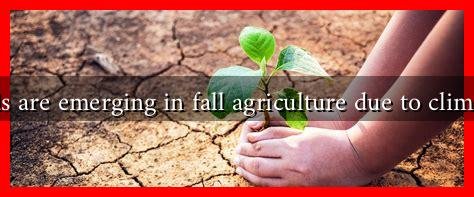-
Table of Contents
Emerging Trends in Fall Agriculture Due to Climate Change
As climate change continues to reshape our environment, its impact on agriculture is becoming increasingly evident. Farmers are adapting to new challenges and opportunities, particularly in the fall season when harvests are typically gathered. This article explores the emerging trends in fall agriculture driven by climate change, highlighting innovative practices, shifting crop patterns, and the importance of sustainability.
Shifting Crop Patterns
One of the most significant trends in fall agriculture is the alteration of crop patterns. As temperatures rise and precipitation patterns change, farmers are re-evaluating which crops to plant and when to plant them. Some key observations include:
- Extended Growing Seasons: Warmer temperatures have led to longer growing seasons in many regions. For instance, in the Midwest United States, farmers are now able to plant corn and soybeans earlier in the spring and harvest later in the fall.
- New Crop Varieties: Farmers are increasingly turning to heat-resistant and drought-tolerant crop varieties. For example, the introduction of new wheat strains that can withstand higher temperatures is becoming more common.
- Shifts in Geographic Distribution: Traditional agricultural regions are changing. For instance, some northern states are now suitable for crops like grapes and olives, which were previously limited to warmer climates.
Innovative Agricultural Practices
To cope with the challenges posed by climate change, farmers are adopting innovative practices that enhance resilience and sustainability. These practices include:
- Cover Cropping: Farmers are increasingly using cover crops to improve soil health and prevent erosion. Cover crops, such as clover and rye, are planted in the fall to protect the soil during winter months.
- Precision Agriculture: The use of technology, such as drones and soil sensors, allows farmers to monitor crop health and optimize resource use. This precision helps in making informed decisions about irrigation and fertilization.
- Agroforestry: Integrating trees into agricultural landscapes is gaining traction. This practice not only enhances biodiversity but also helps in carbon sequestration, making farms more resilient to climate impacts.
Water Management Challenges
Water availability is becoming a critical issue in fall agriculture due to changing precipitation patterns. Farmers are facing both droughts and flooding, necessitating improved water management strategies. Some trends include:
- Rainwater Harvesting: More farmers are investing in systems to capture and store rainwater for irrigation during dry spells.
- Drip Irrigation: This efficient irrigation method minimizes water waste and is becoming more popular, especially in regions facing water scarcity.
- Soil Moisture Monitoring: Advanced soil moisture sensors are helping farmers determine the optimal time for irrigation, reducing water usage while maintaining crop health.
Economic Implications and Market Shifts
The economic landscape of agriculture is also changing due to climate change. Farmers are experiencing fluctuations in market demand and prices, influenced by the availability of crops and changing consumer preferences. Key trends include:
- Increased Demand for Local Produce: Consumers are increasingly seeking locally sourced food, prompting farmers to adapt their production to meet this demand.
- Organic Farming Growth: There is a rising interest in organic farming practices, which are often more resilient to climate impacts. This shift is supported by consumer preferences for sustainable products.
- Insurance and Risk Management: Farmers are turning to crop insurance and risk management strategies to mitigate the financial impacts of climate-related events.
Conclusion
Climate change is undeniably reshaping fall agriculture, prompting farmers to adapt through shifting crop patterns, innovative practices, and improved water management strategies. As the agricultural landscape evolves, it is crucial for stakeholders to embrace sustainability and resilience to ensure food security in the face of ongoing climate challenges. By understanding these emerging trends, farmers can better prepare for the future, contributing to a more sustainable agricultural system.
For more information on sustainable agricultural practices, visit NRCS.

